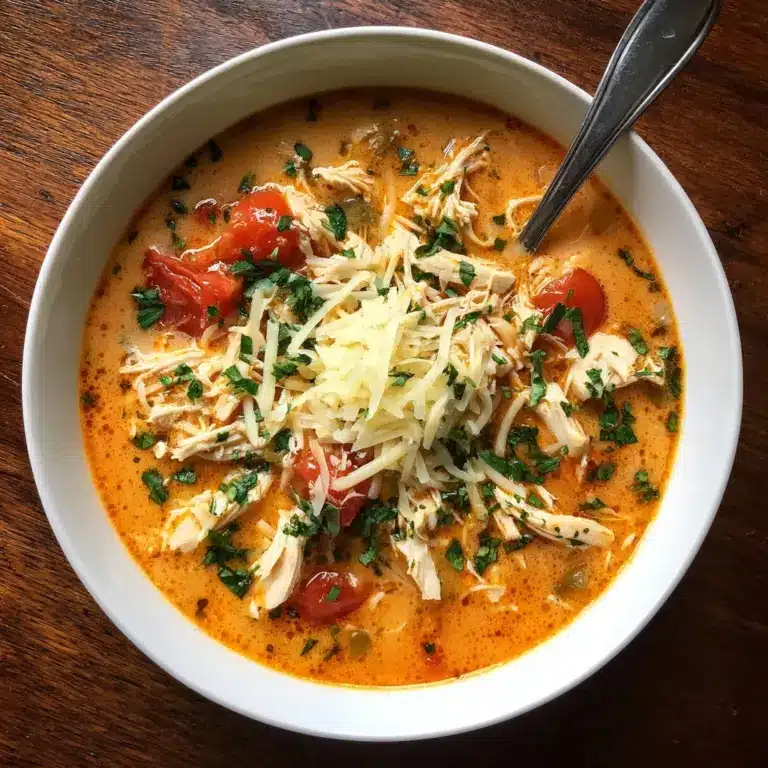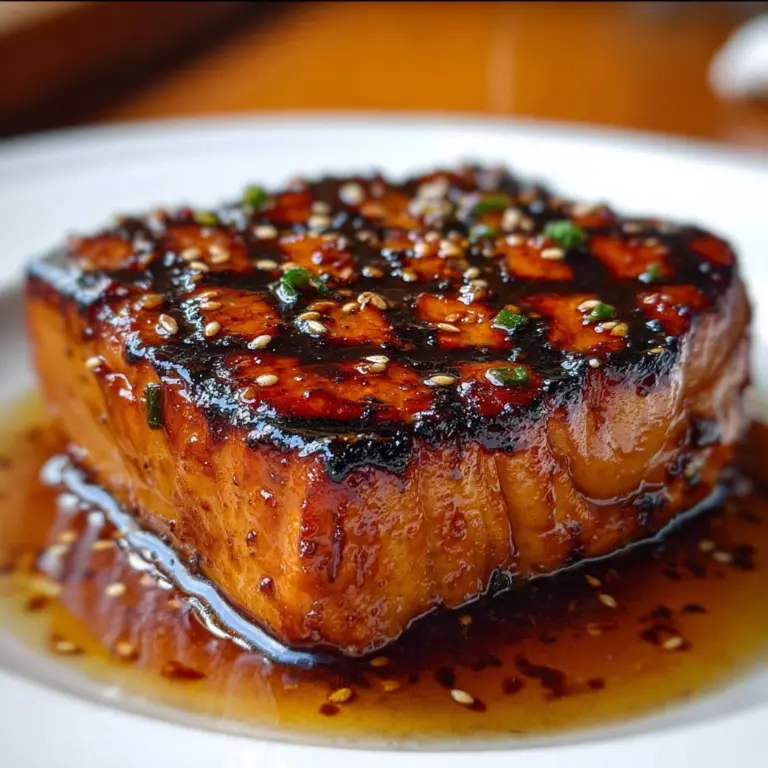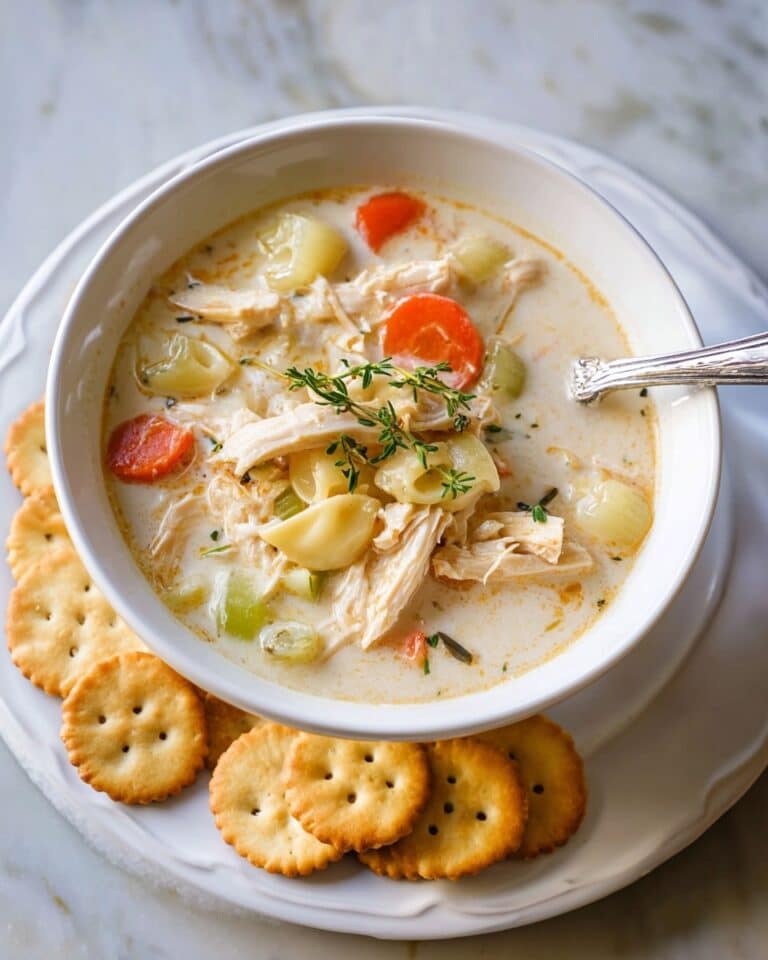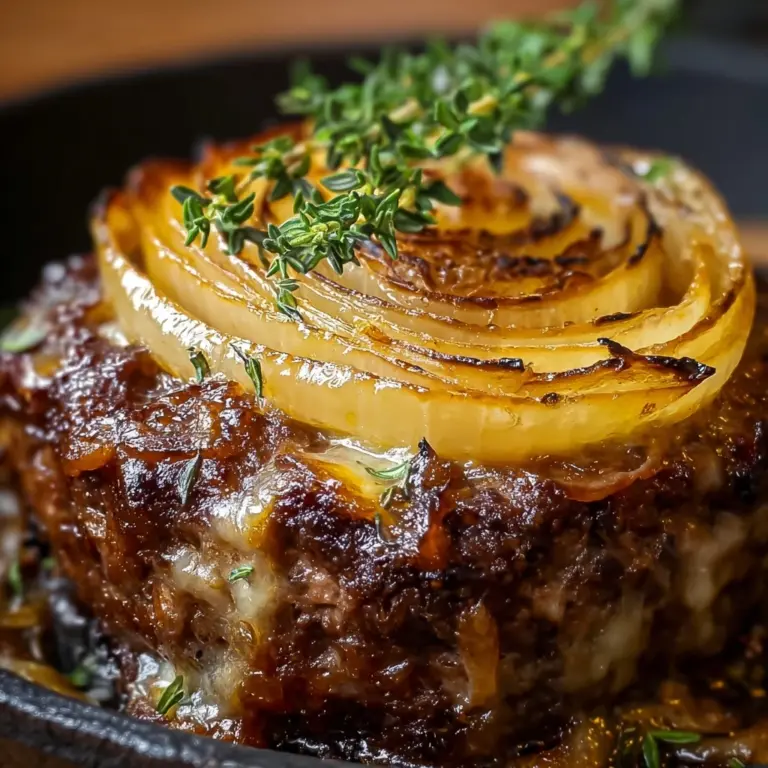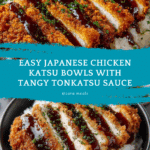Guide to Making Authentic Katsu at Home Recipe
If you have ever craved that perfect crispy yet tender fried cutlet that melts in your mouth while packed with flavor, you are in for a treat. This Guide to Making Authentic Katsu at Home will walk you through crafting Japanese Katsu Bowls that combine the crunchiest panko crust with juicy chicken or pork, served over a bed of perfectly seasoned rice. It’s a delightful harmony of texture, taste, and tradition that you can master right in your kitchen.
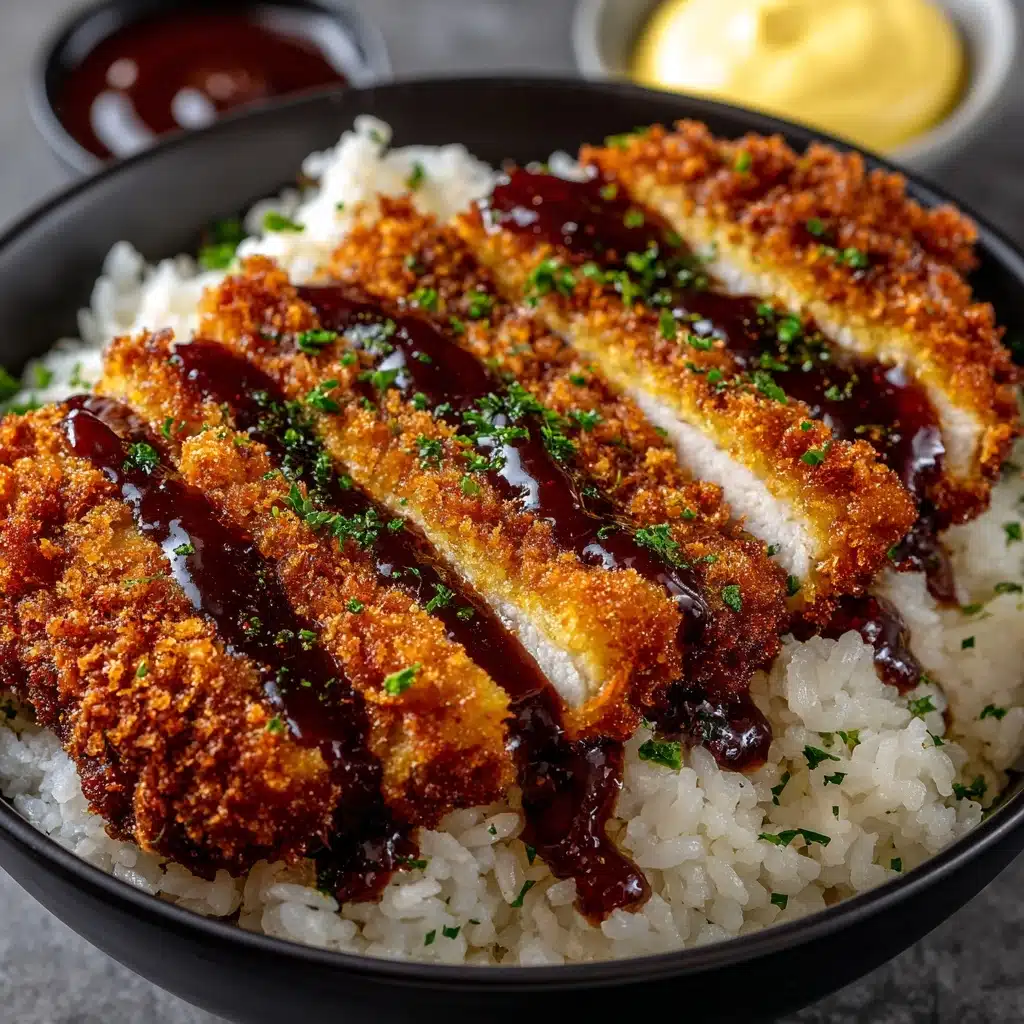
Ingredients You’ll Need
These ingredients are wonderfully straightforward yet each plays a crucial role in balancing flavor, texture, and visual appeal. From the fluffy Japanese short-grain rice to the vibrant shredded cabbage, every element is essential in making your katsu bowl truly shine.
- Boneless chicken breasts or pork loin: Choose your favorite protein; pounding it even ensures tender, uniform cooking.
- Salt and pepper: Basic seasoning that enhances the natural flavor of your meat.
- All-purpose flour: Creates a light layer for the panko to adhere for extra crispiness.
- Large eggs: Act as a binding agent helping the breadcrumbs stick perfectly.
- Panko breadcrumbs: The secret to that signature crunchy coating that holds up beautifully when fried.
- Vegetable oil: Neutral oil for frying to get a golden crust without overpowering flavor.
- Japanese short-grain rice: The perfect sticky base for the katsu bowl, tender and slightly sweet.
- Rice vinegar, sugar, salt: Combined to season the rice with a subtle tang and sweet balance.
- Tonkatsu sauce: A savory and tangy sauce that complements the fried cutlet perfectly.
- Soy sauce, Worcestershire sauce, ketchup: Mixed into the sauce to create a complex, rich flavor.
- Shredded cabbage: Adds crisp freshness and a pleasant crunch against the fried cutlet.
- Green onions: Provide a mild bite and fresh herbal notes.
- Sesame seeds: For a nutty garnish that adds texture and aroma.
- Pickled ginger (optional): Cuts through the richness with its bright, tangy flavor.
How to Make Guide to Making Authentic Katsu at Home
Step 1: Prepare the Rice
Start by rinsing the Japanese short-grain rice under cold water until the water runs completely clear; this removes excess starch and prevents it from becoming too sticky. Soak the rice in fresh water for 30 minutes to hydrate the grains evenly. With the rice covered, bring it to a boil, then reduce heat and simmer for 15 minutes without lifting the lid, allowing gentle steam cooking. After turning off the heat, keep the lid on for another 10 minutes to let the rice finish steaming to fluffy perfection. Finish by folding in a mixture of rice vinegar, sugar, and salt, gently seasoning the rice for that classic sushi-like tang.
Step 2: Prepare the Chicken or Pork
Take your chicken breasts or pork loin and pound them evenly to about ½ inch thickness; this step ensures faster and more even cooking. Season both sides liberally with salt and pepper, enhancing the natural meat flavor without overpowering it.
Step 3: Bread the Cutlets
Set up a straightforward but crucial breading station: one plate of all-purpose flour to help the egg adhere, a bowl of beaten eggs for binding, and a plate of panko breadcrumbs that will deliver exceptional crunch. Dredge each piece of meat first in flour, then dip into the eggs, and finally coat thoroughly with panko. This triple step ensures a light but super crispy crust once fried.
Step 4: Fry the Katsu
Heat enough vegetable oil in a skillet for shallow frying. When the oil is hot but not smoking, carefully place your breaded cutlets in the pan. Fry them 4 to 5 minutes on each side until they turn a gorgeous golden brown and the meat is cooked through. Drain on paper towels to remove excess oil and let them rest briefly before slicing; resting helps the juices redistribute for moist, tender bites.
Step 5: Prepare the Tonkatsu Sauce
Combine tonkatsu sauce, soy sauce, Worcestershire sauce, and ketchup in a bowl. Stir well to create a rich, tangy sauce that elevates the crispy cutlet with its savory complexity. The sauce is an essential component in any Guide to Making Authentic Katsu at Home to capture the authentic taste experience.
Step 6: Assemble the Bowl
Start with a bed of your perfectly seasoned rice, then layer sliced katsu atop. Scatter shredded cabbage and sliced green onions around to provide fresh, crunchy contrast. Drizzle generously with your homemade tonkatsu sauce and sprinkle with sesame seeds for a subtle nutty aroma. Pickled ginger on the side adds a bright zing for those who love a little extra kick.
How to Serve Guide to Making Authentic Katsu at Home
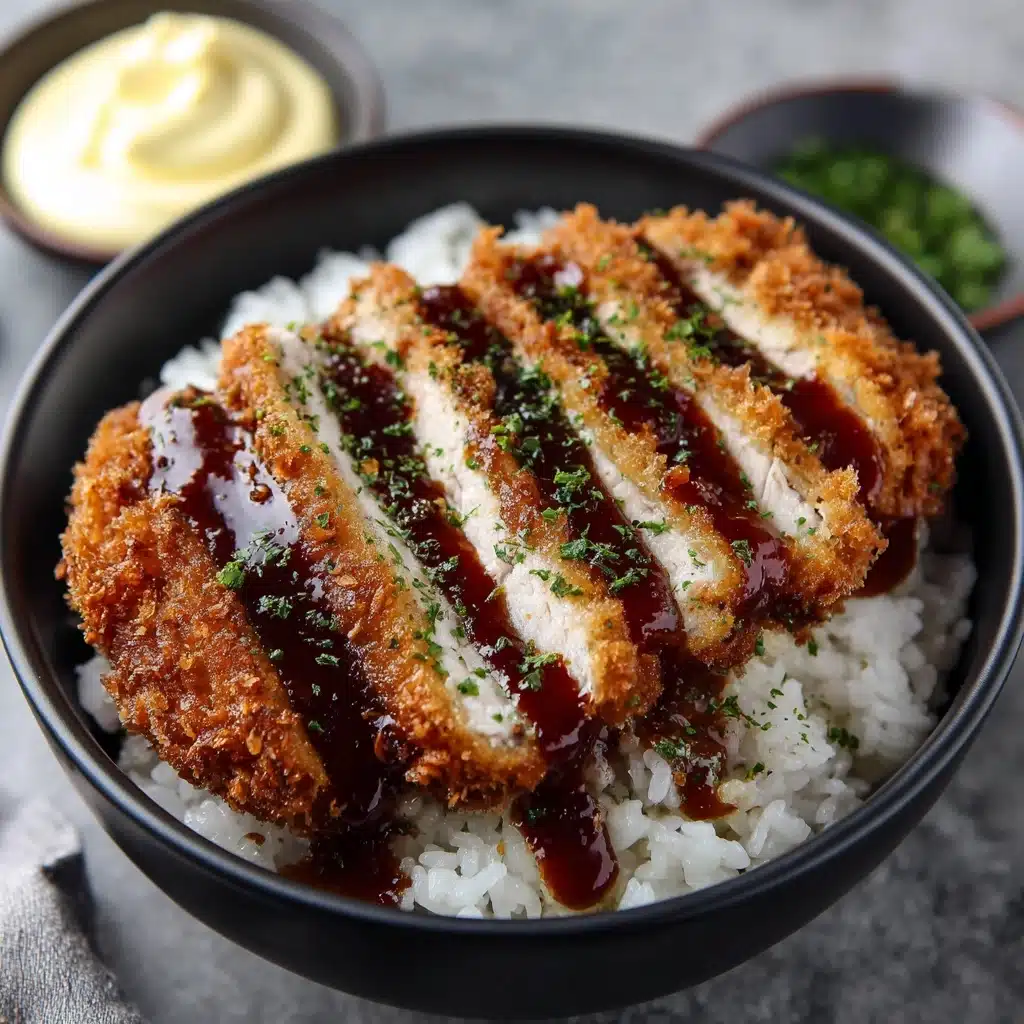
Garnishes
Simple garnishes like sesame seeds and thinly sliced green onions add that perfect finishing touch in both flavor and texture. Pickled ginger is optional but highly recommended if you want to brighten the palate between savory bites. These little details turn your homemade katsu bowl into a restaurant-worthy presentation.
Side Dishes
To complete your meal, serve the katsu bowl alongside fresh miso soup or a light cucumber salad. These sides complement the richness of the fried cutlet without overwhelming your taste buds. A bowl of steamed edamame is also a great addition to add extra protein and freshness.
Creative Ways to Present
Try serving your katsu in a large, rustic bowl or a shallow plate with colorful pickled vegetables arranged artfully to enhance visual appeal. For a fun twist, turn the katsu bowl into a bento-style lunch box with neat compartments holding the rice, cutlet, cabbage salad, and pickles. This not only looks inviting but makes for a portable meal that’s just as delicious.
Make Ahead and Storage
Storing Leftovers
Leftover katsu is best stored in an airtight container in the refrigerator and should be consumed within 2 to 3 days for optimal freshness. Keep the crispy cutlet separate from the rice to prevent sogginess. When stored properly, you’ll still enjoy that wonderful crunch and juicy meat on day two.
Freezing
You can freeze cooked katsu by placing cutlets in a single layer on a tray to freeze solid before transferring them to a freezer-safe bag or container. This prevents them from sticking together. Frozen katsu can be stored for up to one month and is perfect for quick, crispy meals anytime you crave them.
Reheating
To reheat while preserving the crunch, avoid microwaving alone. Instead, reheat frozen or refrigerated katsu in an oven or air fryer at 350°F (175°C) for about 8 to 10 minutes. This method crisps up the coating without drying out the meat, making your leftovers taste almost like freshly fried.
FAQs
What is the difference between chicken katsu and tonkatsu?
Chicken katsu is made with boneless chicken breasts, while tonkatsu uses pork loin or pork cutlets. Both share similar breading and frying techniques but offer different flavor profiles depending on the meat used.
Can I use regular breadcrumbs instead of panko?
While you can, panko breadcrumbs are preferred because of their light, airy texture that crisps up beautifully. Regular breadcrumbs tend to be denser and may not yield the signature crunchy crust.
Is it possible to bake katsu instead of frying?
Yes! Baking is a healthier alternative, though the texture will differ slightly. Coat the cutlets as usual, place them on a greased rack over a baking sheet, and bake at 400°F (200°C) for about 20 minutes, flipping halfway for even browning.
What can I substitute for tonkatsu sauce if I don’t have it?
You can make a simple substitute by mixing equal parts Worcestershire sauce and ketchup, adding a splash of soy sauce and a little sugar to mimic the sweet-savory balance of tonkatsu sauce.
Does the rice vinegar in the rice make it taste sour?
The amount of rice vinegar used to season the rice is subtle and balanced with sugar and salt, creating a mild tang that enhances the overall flavor without overwhelming sourness. It adds that delicate brightness associated with authentic Japanese rice dishes.
Final Thoughts
Mastering this Guide to Making Authentic Katsu at Home not only brings a classic Japanese favorite into your kitchen but also invites you to revel in every satisfying crunch and tender bite. With simple ingredients and easy-to-follow steps, you can confidently prepare a meal that feels both special and comforting. Give it a try, and soon this crispy, juicy katsu bowl might become your new go-to dish for impressing family and friends.
PrintGuide to Making Authentic Katsu at Home Recipe
Japanese Katsu Bowls are a comforting and flavorful meal featuring crispy breaded chicken or pork served over perfectly seasoned Japanese short-grain rice, topped with shredded cabbage and a tangy homemade tonkatsu sauce. This guide walks you through making authentic katsu at home from scratch, combining juicy fried cutlets with a balance of sweet and savory accompaniments for a truly satisfying dish.
- Prep Time: 15 minutes
- Cook Time: 25 minutes
- Total Time: 40 minutes
- Yield: 2 servings 1x
- Category: Main Course
- Method: Frying, Simmering
- Cuisine: Japanese
- Diet: Halal
Ingredients
Protein
- 2 boneless chicken breasts (or pork loin, if preferred)
- Salt and pepper, to taste
Breading
- 1 cup all-purpose flour
- 2 large eggs
- 1 cup panko breadcrumbs
- Vegetable oil, for frying
Rice
- 2 cups Japanese short-grain rice
- 2 ½ cups water
- 1 tablespoon rice vinegar
- 1 tablespoon sugar
- ½ teaspoon salt
Sauce
- ¼ cup tonkatsu sauce (or store-bought if preferred)
- 1 tablespoon soy sauce
- 1 teaspoon Worcestershire sauce
- 1 teaspoon ketchup
Garnishes
- 1 cup shredded cabbage
- 2 green onions, sliced
- Sesame seeds, for garnish
- Pickled ginger (optional)
Instructions
- Prepare the Rice: Rinse the Japanese short-grain rice under cold water until the water runs clear to remove excess starch. Transfer the rinsed rice to a saucepan, add 2 ½ cups of water, and let it soak for 30 minutes to improve texture. Cover the saucepan and bring it to a boil, then reduce the heat to low and simmer for 15 minutes without lifting the lid to ensure even cooking. Turn off the heat and keep the rice covered to steam for another 10 minutes.
- Season the Rice: In a small bowl, mix together 1 tablespoon of rice vinegar, 1 tablespoon of sugar, and ½ teaspoon of salt until dissolved. Gently fold this mixture into the cooked rice to give it a subtle tang and sweetness, enhancing its flavor without making it soggy.
- Prepare the Chicken: Pound the chicken breasts evenly to about ½ inch thickness using a meat mallet or rolling pin for uniform cooking. Season both sides generously with salt and pepper to taste.
- Set Up Breading Station: Arrange three shallow dishes for breading – one with all-purpose flour, one with beaten eggs, and the third with panko breadcrumbs. This setup ensures an even coating for crispy results.
- Bread the Chicken: Dredge each chicken breast first in flour, shaking off excess, then dip into the beaten eggs, and finally coat thoroughly with panko breadcrumbs. Press the breadcrumbs gently to adhere well.
- Fry the Chicken: Heat vegetable oil in a skillet over medium heat until hot enough for frying. Carefully place the breaded chicken breasts in the oil and fry for 4-5 minutes on each side until the exterior is golden brown and the interior reaches a safe temperature (165°F or 74°C). Drain the cooked cutlets on paper towels to remove excess oil and let them rest for a few minutes before slicing.
- Make the Sauce: In a small bowl, mix ¼ cup of tonkatsu sauce with 1 tablespoon soy sauce, 1 teaspoon Worcestershire sauce, and 1 teaspoon ketchup. Stir well to combine the flavors for a tangy and slightly sweet sauce that complements the katsu.
- Assemble the Bowl: Serve the seasoned rice on plates or bowls as the base. Top with sliced katsu cutlets, shredded cabbage, and sliced green onions. Drizzle the prepared sauce generously over the top, then garnish with sesame seeds and pickled ginger if desired for an extra burst of flavor and texture.
Notes
- You can substitute chicken breasts with pork loin for a traditional tonkatsu experience.
- Ensure the oil is hot enough before frying to achieve a crispy texture without absorbing excess oil.
- Resting the fried chicken briefly before slicing helps retain juiciness.
- Adjust the sauce ingredients to taste if you prefer a sweeter or tangier profile.
- For a gluten-free version, use gluten-free flour and panko alternatives, and soy sauce substitute.
Nutrition
- Serving Size: 1 bowl (approximate)
- Calories: 650 kcal
- Sugar: 7 g
- Sodium: 900 mg
- Fat: 28 g
- Saturated Fat: 5 g
- Unsaturated Fat: 20 g
- Trans Fat: 0 g
- Carbohydrates: 70 g
- Fiber: 3 g
- Protein: 30 g
- Cholesterol: 110 mg
Keywords: Japanese Katsu Bowl, Chicken Katsu, Tonkatsu, Japanese Rice Bowl, Homemade Katsu, Crispy Fried Chicken, Japanese Cuisine


